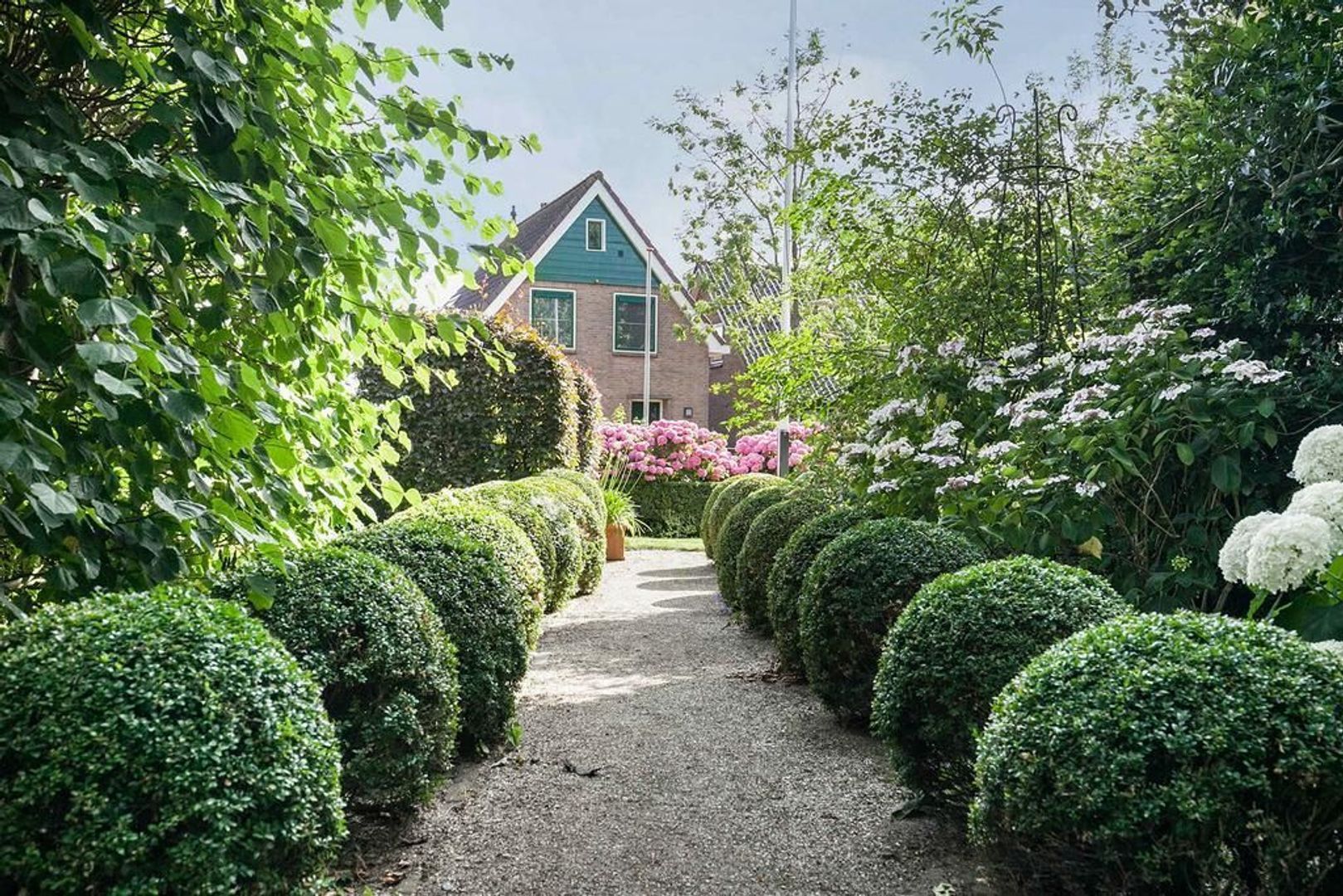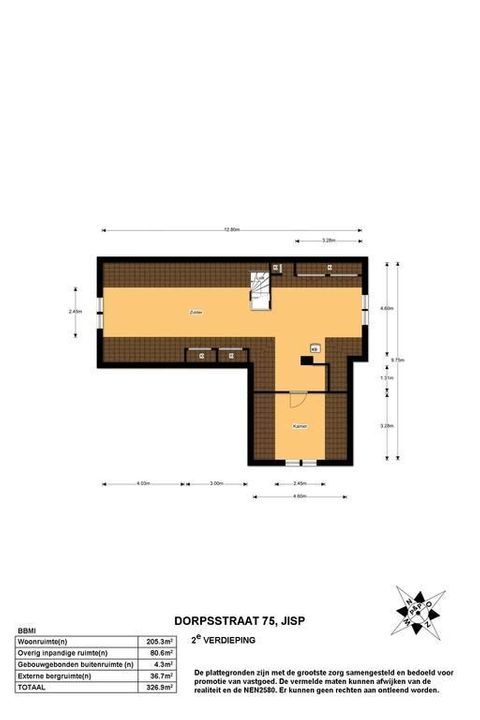Only twenty five minutes by car from the centre of Amsterdam, this exceptional residential house with a large garage, horse accommodation, large garden and 10 acres of meadow is situated by the village Jisp. The feeling of rural living is combined here in a beautiful (national) monumental residential house with the amenities of a small village core which includes primary school, (sports) clubs and restaurants. Located by open waters you will find the uncultivated lands of the peatland of Wormerveld and Jisperveld on the other side. True silence and privacy at a short distance from Amsterdam.
The (national) monument
Former Parsonage, named 'Ghispesteijn', at the time belonging to the older Dutch Reformed Church, located within the historical village Jisp. The parsonage with its eclectic style was constructed as a design of the famous Purmerend city architect Jan Mager in the final quarter of the nineteenth century. The parsonage, which has been dug up, comes with a front yard and spacious backyard and is situated diagonally opposite the church at the north side of the Dorpsstraat. The whole consists of a beautiful residential house, a beautiful pleasant formal front and backyard, a large garage/storage and horse accommodation and an amazing meadow, in total around 10 acres in size with a large field shed with separate entrance. There is also a boathouse by the open water with access to the Wormerveld and Jisperveld. Of course, you can park multiple cars on own terrain. The house went through considerable restoration over the years by the current owners. Because of this, monument and outbuildings are currently in excellent condition.
Description (national) monument
At an L-shaped ground plan, a parsonage was erected consisting of three construction layers in grey/red bricks cross braced below and covered with old hollow tiled gable roofs. In the brickwork on top of the ground floor there is a kerbstone brick frieze and below the roof’s edge a block frame. Around that, a dark green painted plastered plinth. At the back, a one-layer kitchen construction below an angled roof covered with tuile du Nord tiles. The three crosscut spout facades were similarly jointed with plastered corner pilaster strips with hood moulds, beams and cover plates and a plastered frieze by the roof’s edge. Above the corner pilaster strips and in the spout on a console there are simple aedicule-like blocks. Within the pilaster strips within plaster the following joint has been applied: a plinth with rectangular shallow recesses on the ground floor, three small shallow recesses with, at the top in the middle, a twill arch which breaks through a frieze with rectangular shallow recesses. On top of this, on the upper floor, a parapet with, on top of that, a three-way division closed off on the right below a graduated field within it a trapezium-shaped recess. On both sides of this joint, there are similar pilasters like on the corners with the same aedicule-like blocks. Adjacent to the attic floor two linked windows below a pediment which changes into the crowning of the façade top. The spout façade at the street side (Z) has on the ground floor and on the upper floor in all surfaces (sliding) windows with skylights and in the parapet the name 'Ghispesteijn' in italics. The spout façade at the eastern side only has glass in the middle surfaces (T-windows), in the parapet an ornamental frame as the side stone brick frame and embossed circles in the frieze. The spout façade at the western side is the same but completely blinded on the upper floor.
The long side on the street side has, on the ground floor, two pairs of opening garden doors with skylight and on the upper floor three T-windows, all frames in a stucco frame with a pediment. At the right in the axilla, an extended entrance portal below a flat roof, cantilevered on carved corbels. The front door is located below a flat canopy and skylight. The austere stucco frame of the front side of the extension connects to three ashlar steps. In the side of the extension there is a round four rhombus window with a horizontal fix.
The austere rear facade has on the left a kitchen window and in the added construction from left to right a garden door with skylight and a large window with beautiful view on the front yard.
The interior partially has the original layout including panelled doors from the construction period.
In the front yard there is a (fishing) pond.
Valuation monument
This former parsonage from the Dutch Reformed Church dates from the last quarter of the nineteenth century, of general importance due to its architectural and cultural historical value as a characteristic example of a notable’s home in a rural area with characteristic eclectic detailing for its construction time and function. The building is of importance as iconic component in the varied historical ribbon development of Jisp and due to the original link to the nearby church.
Layout
Ground floor
Beautiful entrance, with after the vestibule a luxurious hall, a stairs cupboard, basement, closet with washing machine connection, toilet, rear entrance, very beautifully laid out and representative office, atmospheric kitchen diner with a fireplace and a beautiful living room and opening doors.
1st floor
Landing with closet, spacious and luxurious bathroom with semi-integral wide balcony, 3 bedrooms.
2nd floor
Accessible by fixed stairs, open attic with a room.
Meadow grounds
The 10 acres meadow grounds comes with 3 free ascents and has an authentic wooden PET windmill for drainage, an iron Boschman windmill and an electric 2 year old Vopo pump. Excellently suitable as a horse/sheep meadow, etc.



 English
English
 Nederlands
Nederlands

























































